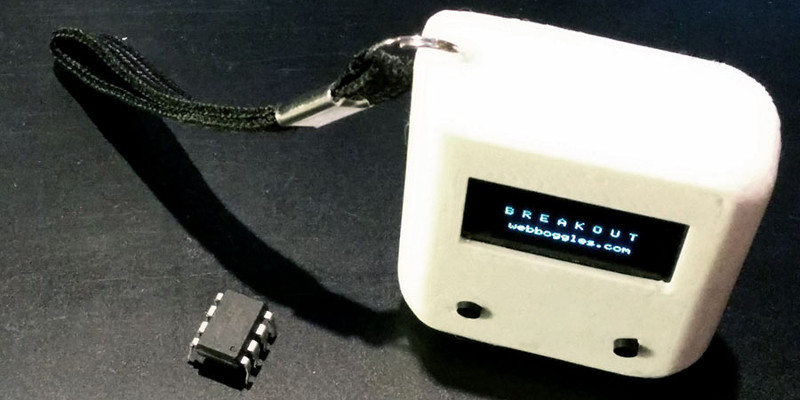[Ilya Titov] has made a game console. Not just any game console, but an extremely small ATtiny85-based console suitable for putting on a key ring and assembled into a very professional product with PCB and 3D printed case. This is a project that has been on the go since 2014, but the most recent update is a new version designed for tighter and more easy assembly.
All construction is through-hole rather than SMD, and aside from the ATtiny85 the console uses an OLED screen, piezo buzzer, tactile switches and a handful of passive components. Power comes from a single CR2032 coin cell which sits under the screen. Best of all the PCB design is available as a PDF and the 3D printed case can be found on Thingiverse.
There are two games for the console, as well as the Breakout clone whose code is in the 2014 piece linked above he’s written UFO Escape, an obstacle-avoiding side-scroller. You’ll have to burn both game and 8MHz internal clock bootloader to the ATtiny85 yourself. There are no cartridges with this console, though if the processor sits in a DIP socket the game can be changed over simply by swapping processors programmed with the appropriate game.
He’s produced a full assembly video with some UFO Escape gameplay thrown in, shown here below the break.
We’ve featured many ATtiny85 hacks here at Hackaday, there is a joy in eking the most from such a minimalist processor. Some that stick in the mind are a very nicely executed watch on a ring, 8-colour VGA from an ATtiny, an NTSC transmitter, and the smallest MIDI synthesiser. Please, keep them coming!
[via Maidstone Hackspace]
















Very nice work.
+1 for his third hand
nice (tiny comment)
neat.
It seems that the lithium cell is well sufficient to power SSD1306 OLED. That’s odd, as the internal charge pump is specified for 3.5-4.2V range (https://cdn-shop.adafruit.com/datasheets/UG-2864HSWEG01.pdf). CR2032 certainly won’t exceed 3.0V under load. Seems one should never blindly believe the datasheet ;) I see a wristwatch project coming!
It can but not recommended. It could be also a SSH1106 which is cheaper and a bit compatible (not checked on this parameter). On ebay some of the OLEDs use this controller but it is advertized as SSD1306.
Another thing is that most breakout board do is that Vbat = Vdd which isnt right either. According to the datasheet it should be Vbat>Vdd . Also Vbat should be applied after Vdd and the other way around when powering down. It never failed on me, but still not within recommended specs.
That’s a pity that source code can’t be compiled without errors. I tried both of the games.
How much can I buy one for?
Seems a good use for a cheap Attiny board ( http://s.click.aliexpress.com/e/ZJyn2je ) With included USB bootloader so no external programmer needed
T_T